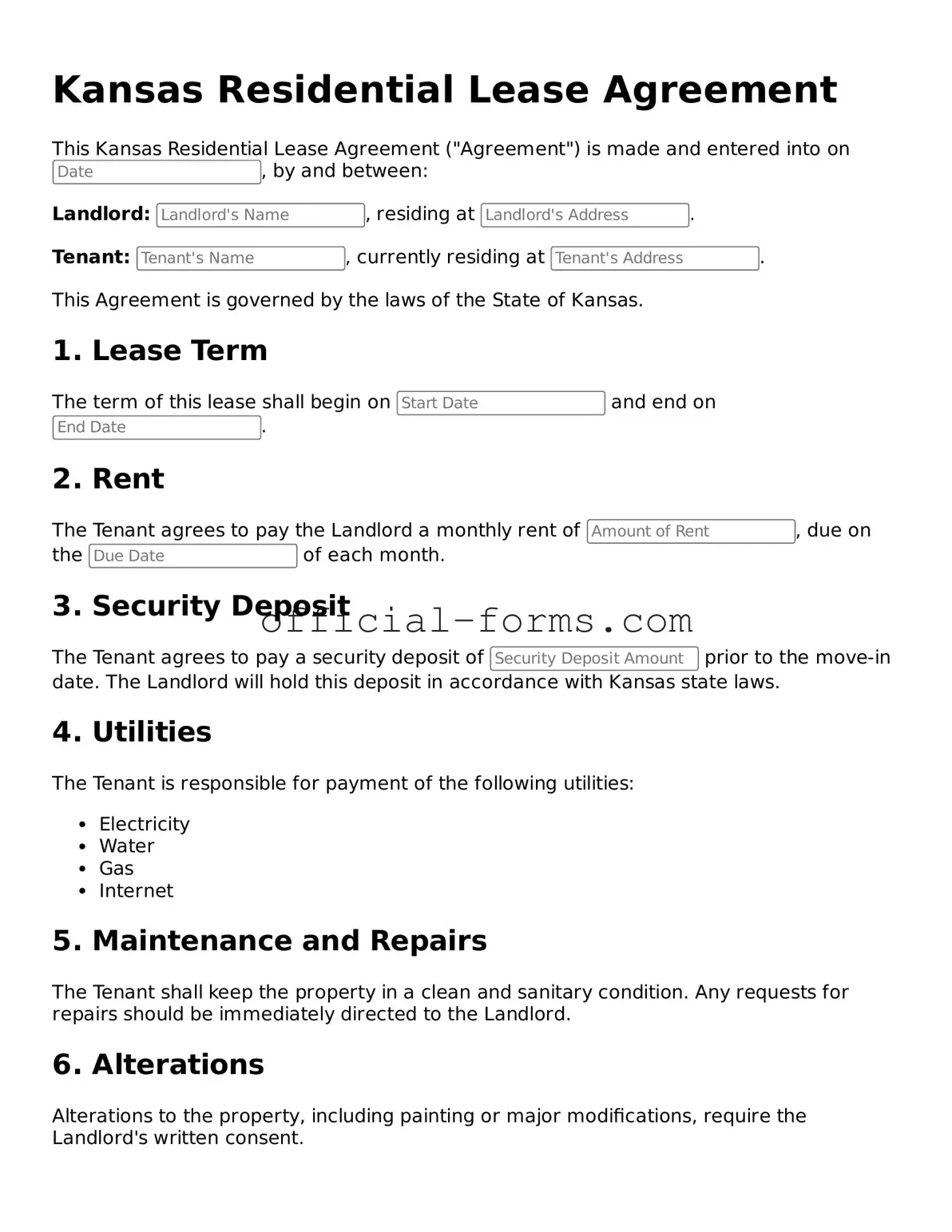Filling out the Kansas Lease Agreement form can be straightforward, but many people make common mistakes that can lead to confusion or legal issues. One frequent error is failing to include the correct names of all tenants. It’s essential to list everyone who will be living in the rental unit. Leaving someone out can create problems later on.
Another mistake involves not specifying the rental property’s address clearly. The address should include all relevant details, such as the unit number, street name, city, and zip code. Incomplete or inaccurate information can result in misunderstandings about where the lease applies.
Many individuals also overlook the start and end dates of the lease. These dates must be clearly defined to avoid disputes about when the lease begins and when it ends. Ambiguity in this area can lead to complications regarding rent payments and tenant rights.
When it comes to rent payment details, some people fail to specify the amount due and the payment schedule. It’s crucial to indicate how much rent is owed, when it is due, and acceptable payment methods. Without this information, tenants may not know what to expect, leading to potential late fees or misunderstandings.
Another common oversight is neglecting to outline the security deposit terms. The lease should state the amount of the deposit, the conditions for its return, and any deductions that might be taken. This clarity helps protect both the landlord and tenant.
Some individuals do not read the entire lease before signing. Skimming through the document can lead to missing important clauses or provisions. Taking the time to review the lease in detail ensures that all parties understand their rights and responsibilities.
Additionally, failing to include pet policies can create issues later. If pets are allowed or prohibited, this should be clearly stated in the lease. Not addressing this topic can lead to disputes between landlords and tenants.
Another mistake is not documenting any agreed-upon modifications to the lease. If any changes are made verbally, they should be written into the lease to avoid confusion. Verbal agreements are often difficult to enforce.
People sometimes forget to include signatures and dates. Both the landlord and tenant must sign the lease for it to be valid. Missing signatures can render the agreement unenforceable, leaving both parties vulnerable.
Finally, many tenants fail to keep a copy of the signed lease for their records. It’s important to have a copy on hand for reference throughout the lease term. Without it, tenants may struggle to recall specific terms or agreements made during the leasing process.
